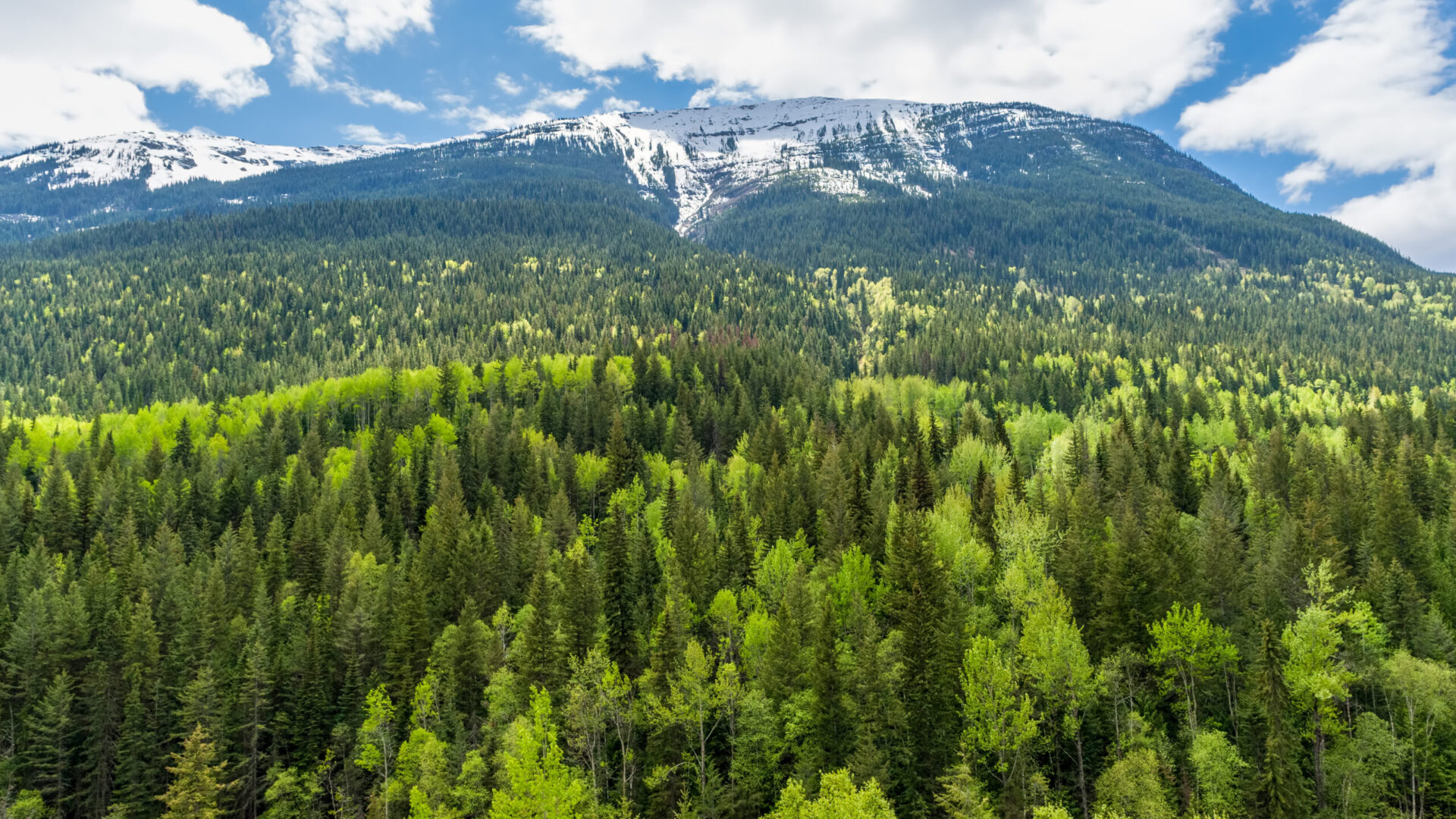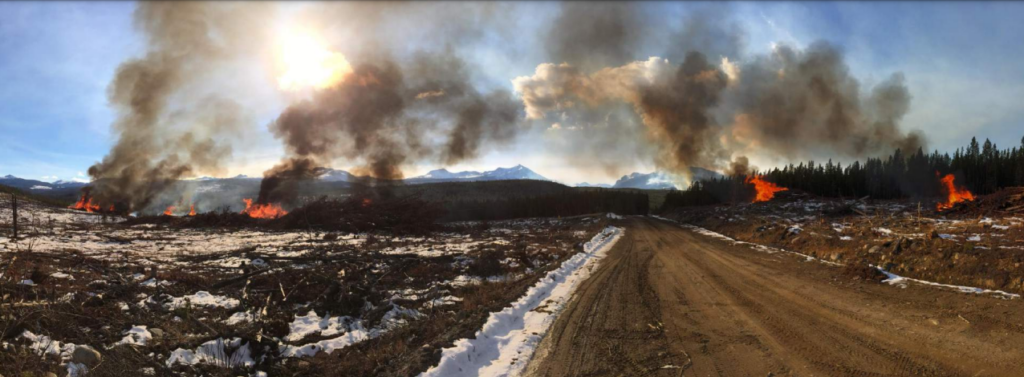
- We are confident our biomass is sustainable and legally harvested and meets the requirements of our 2019 sourcing policy.
- Fibre that Drax has sourced from publicly owned forests in British Columbia have been designated as being available to harvest legally and sustainably by the Government of British Columbia, alongside First Nations. We do not own forests or sawmills and are not responsible for the licensing and harvesting of forests.
- In 2023, 2.5% of the material used at Drax Power Station came from British Columbia, Canada.
What is Old Growth?
The classification and treatment of Old Growth forest is a complex and evolving area.
In 2021, the Government of British Columbia introduced Old Growth Deferral Areas (OGDAs) as an interim measure before a new forest management approach was agreed with First Nations. This began to be implemented in 2022.
As a responsible operator, we regularly review our policies to ensure our sourcing in BC meets our regulatory obligations and our own sustainability objectives as well as those of our stakeholders. We want to take this opportunity to reassure our stakeholders and partners about our sustainability and sourcing practices, which have evolved significantly since 2017.
In 2023, Joe Aquino, Drax’s Director of Sustainability in Canada made this video showcasing forestry in British Columbia:
Context to Canadian forests and their management
Around 94% of the forests in Canada are publicly owned and the Government of British Columbia, in partnership with First Nations, has procedures, policies and laws in place to ensure sustainable forest management practices protect important forest ecosystems and support the forest products sector.
Canada’s forests, including those in BC, are made up of varying species and age class. The climate, environment, and ecosystem across the west of Canada is unique and, in close partnership with First Nations, careful due diligence and planning is required to take care of this critical resource.
Areas identified by the Government of British Columbia for harvest are carefully selected by them using an extensive list of environmental criteria that includes but is not limited to; old growth management; landscape and site level biodiversity; age class distribution (old growth); riparian management; watershed management; wildlife management; visual quality; species at risk; rare and sensitive ecosystems; cultural heritage resources; soil quality; species diversity; site productivity; as well as social and economic considerations.
Drax’s approach to sourcing biomass from Canada
Drax can only source biomass from public forests that the Government of British Columbia and First Nations have designated as being able to be harvested by timber management companies. Drax does not own forests or sawmills, does not harvest forests and has no influence over this decision-making process.
Without having a market for the low-grade woody fibre from forests, this material may be burnt on site at sawmills or left as slash piles in the forest. This is a tactic used as part of a wider set of activities to mitigate wildfire risk and the spreading of disease/pests in Canadian forests. But it is not a good climate or economical outcome to burn forest residue in forests or at the roadside – it is far better to utilise this fibre according to strict criteria and best practice, in order to generate social value and renewable electricity.
Most of the material (77% in 2023) used to produce Drax’s wood pellets in Canada comes from sawdust and other sawmill residues created when sawmills produce wood products used in construction. The remaining 23% of our fibre comes from forest residues, including low grade roundwood, tops, branches and bark.
It is important to note that under current UK regulatory requirements, fibre from forests in BC can be used in the UK at Drax Power Station as long as the biomass has been harvested legally and meets the Land Criteria within the wider UK biomass sustainability criteria.
In the absence of a market for low grade fibre, slash, the leftover tree limbs, tops and other residues may be burnt where they are cut to reduce the risk of forest hazards. Instead, this biomass can be utilised to produce low carbon, renewable power like that generated at Drax Power Station. Image Source: Tsideldel
Old Growth Deferral Areas (OGDA) and our approach
In 2021, the Government of British Columbia introduced Old Growth Deferral Areas (OGDAs) as an interim measure before a new forest management approach was agreed with First Nations. These began to be implemented in 2022 and are separate to Legal Old Growth Management Areas (OGMAs). On their website about this policy, the Government of British Columbia states:
“Deferrals will remain in place until the new forest management approach being informed by the old growth strategic review is implemented and local discussions on long-term management of old growth values are concluded through initiatives such as Land Use Plans, Forest Landscape Plans and Integrated Resource Management Plans.”
As part of this policy development, the Government of British Columbia decided it would not impose OGDAs but only do so in agreement with First Nations. Some First Nations disagree with the policy, while others will only agree to OGDAs if they receive financial compensation. In August 2022, Minister of Forests, Lands, Natural Resource Operations and Rural Development, Katrine Conroy, said:
“Government has always been clear that we will respect their decisions and will not be imposing deferrals unilaterally. Logging will proceed on their territories.”
https://archive.ph/2zEb0#selection-891.67-903.163
Furthermore, this interim deferral status can be removed from an area and a harvest licence can be issued by the Government of British Columbia to forest management companies.
Whilst the work to implement this interim policy alongside the permanent new forest management approach is continuing, Drax made the decision in October 2023 to stop sourcing wood fibre directly from OGDAs and OGMAs, even if a legal harvest was subsequently granted. This is in addition to our commitment to not source fibre from OGMAs which are protected.*
Most of the material (77% in 2023) used to produce Drax’s wood pellets in Canada comes from sawdust and other sawmill residues and as such is not governed by this decision as it comes to us as discard from sawmills. However, this decision ensures that any material that Drax sources directly from the forest (i.e. the remaining 23% of our fibre comes from forest residues, including low grade roundwood, tops, branches and bark) is not sourced from OGDAs.
Work to implement this Drax decision across our supply chain is ongoing.
It is worth noting that as a result of our decision to pause sourcing from OGDA, low-grade material across some areas is now being burnt in the forest and at roadside or is being designated to be burnt. Again, this is not a good climate or social outcome, but we recognise that the Old Growth Deferral process in BC is evolving and await the outcome of the Provincial Government review.
The grading system used by the Government of British Columbia
The BBC has stated that some of the material which Drax has taken from the four harvest sites they have highlighted was Grade 1 and 2 sawlogs.
The information the BBC has seen on invoices from the Government of British Columbia to Drax are billing grades applied to the low-grade material that has been rejected by the sawmills with a standard predetermined percentage of 0.2% for Grade 1 and 2.7% for Grade 2. This is assigned to special forest products under the Concurrent Residual Harvest System (CRHS) – see table below (relevant row “Pellets/Bio-Energy”).
Concurrent Residual Harvest System
| Facility Type | Vol/Wt Ratio | Grade 1 % | Grade 2 % | Grade 4 % | Grade 6 % | Grade Z % |
|---|---|---|---|---|---|---|
| Firewood < 15% (G1&2) | 1.47 | 0.3 | 10.4 | 88.6 | 0.5 | 0.2 |
| Cants < 20% (G1&2) | 1.57 | 0 | 15.3 | 84.7 | 0 | 0 |
| Round Post and Rail < 50% (G1&2) | 1.28 | 0 | 42.46 | 20.65 | 18.72 | 18.18 |
| Split Post and Rail <40% (G1&2) | 1.18 | 0 | 19.15 | 76.06 | 0.07 | 4.72 |
| Pellets/Bio-Energy < 5% (G1&2) | 1.23 | 0.2 | 2.7 | 85.7 | 0.01 | 11.4 |
The primary purpose of the CRHS is to provide an alternative method of scale for low-grade timber harvested in the Interior as per Section 5 (1) (c) (iii) of the Scaling Regulation used in BC. It is a taxation calculation and as such is standard across sites and does not provide an accurate assessment of what has actually been delivered to Drax’s pellet mills. The objective of this system is to reduce the administrative burden associated with timber delivered to secondary manufacturing facilities and thereby improve utilisation of forest resources.
These are not sawlogs that could have been used in sawmills. Each sawmill has its own criteria for saw logs set out in its own technical specifications. A Grade 1 or 2 log can be rejected for various other reasons even down to the species of tree depending on the sawmill in question. Drax, and any other biomass pellet producer, are the lowest cost option for timber companies and therefore we will only receive fibre where there is not a higher commercial value to be had elsewhere in the supply chain.
*A clarification was made to this paragraph on 19 March 2024. It originally stated:
Whilst the work to implement this interim policy alongside the permanent new forest management approach is continuing, Drax made the decision in October 2023 to stop sourcing wood fibre directly from OGDAs, even if a legal harvest was subsequently granted. This is in addition to our commitment to not source fibre from OGMAs, which are protected.








